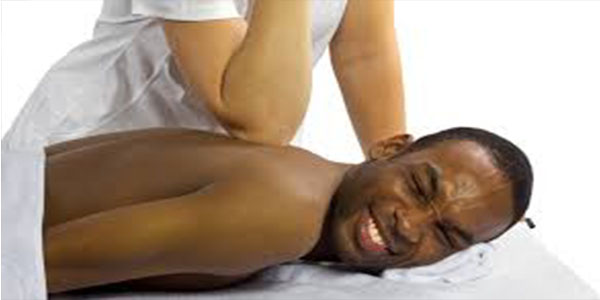
Of course. Here is a comprehensive overview of Swedish Massage.
What is Swedish Massage?
Swedish massage is the most common and widely recognized type of massage in the Western world. It is a classic system of therapeutic techniques designed to relax the entire body by rubbing the muscles with long gliding strokes in the direction of blood returning to the heart.
The primary goals are to:
- Relax the entire body.
- Increase oxygen levels in the blood.
- Decrease muscle toxins.
- Improve circulation and flexibility.
- Ease tension and stress.
The Five Core Techniques (Strokes)
A Swedish massage session is built upon five fundamental strokes. A therapist will blend these techniques throughout the session.
- Effleurage (Gliding Strokes)
- What it is: Long, flowing strokes performed with the palms, thumbs, or forearms.
- Purpose: To apply oil, warm up the muscle tissue, relax the client, and begin the process of increasing blood flow. This is often how a therapist begins and ends the massage of a specific area.
- Petrissage (Kneading)
- What it is: Deeper, more rigorous techniques where the therapist kneads, rolls, and squeezes the muscles.
- Purpose: To release tension, stretch muscle fibers, break up knots, and enhance circulation by pushing stagnant blood out of the area.
- Tapotement (Percussion)
- What it is: Rhythmic, tapping movements using the sides of the hands (chopping), cupped hands (cupping), or the palms (pounding).
- Purpose: To invigorate and stimulate the area. It’s often used on areas with large muscles, like the thighs and back. It can help loosen respiratory secretions and is not typically used for relaxation.
- Friction (Deep, Circular Pressure)
- What it is: Deep, targeted pressure applied with the fingertips, thumbs, or elbows in small, circular movements.
- Purpose: To break down adhesions and scar tissue, reach deeper muscle layers, and work on specific knots (trigger points). This is the most intense part of the massage and is crucial for addressing chronic pain.
- Vibration / Shaking
- What it is: A fine tremor or shaking motion applied with the hand or fingers.
- Purpose: To shake the muscle and release tension. This can be very relaxing and is often used to finish an area before moving on.
What to Expect During a Session
- Environment: You’ll be in a quiet, warm, softly lit room with calming music.
- Undressing: You will undress to your level of comfort. Most people remove all clothing, but it’s perfectly acceptable to leave underwear on. You will always be draped (covered) with a sheet or towel; only the area being worked on will be exposed.
- Communication: The therapist will check in about your desired pressure (light, medium, or firm) and any areas of focus or pain. It’s important to communicate if the pressure is too much or too little.
- Duration: Sessions typically last 60, 90, or 120 minutes.
- After the Massage: You will be left alone to slowly get up and get dressed. It’s recommended to drink plenty of water afterward to help flush out any released toxins.
Benefits of Swedish Massage
The benefits are both physical and mental:
- Stress Reduction: Significantly lowers levels of the stress hormone cortisol.
- Improved Circulation: Enhances blood flow, delivering more oxygen and nutrients to cells.
- Muscle Tension Relief: Loosens tight muscles and can reduce pain.
- Increased Flexibility: Helps improve range of motion by stretching connective tissue.
- Better Sleep: The deep state of relaxation can improve sleep quality.
- Mental Clarity: Reduces anxiety and can improve mood.
Swedish Massage vs. Deep Tissue Massage
This is a common point of confusion.
| Feature | Swedish Massage | Deep Tissue Massage |
|---|---|---|
| Primary Goal | Relaxation and overall well-being | Address specific pain and chronic tension |
| Pressure | Light to medium (can be firm) | Firm to very deep pressure |
| Technique | Long, gliding strokes | Slow, deep strokes focused on problem areas |
| Focus | Superficial layers of muscle | Deepest layers of muscle, fascia, & connective tissue |
| Sensation | Soothing and relaxing | Can be intense or slightly uncomfortable |
| After-Effects | Feeling relaxed, calm, maybe sleepy | Can feel sore for a day or two (like after a workout) |
Note: A firm Swedish massage can be quite deep, and a good therapist will always work within your comfort level. The main difference is the intent behind the pressure.
Who Should Try It?
Swedish massage is excellent for:
- First-time massage clients.
- Anyone looking for relaxation and stress relief.
- People with general muscle tension or soreness.
- Those seeking to improve overall circulation.
Contraindications (Who Should Avoid It)
While generally very safe, you should consult a doctor and inform your massage therapist if you have:
- Contagious skin conditions (rashes, warts, or cold sores)
- Recent surgery or acute injuries
- Infectious diseases
- Severe osteoporosis
- Blood clots, thrombosis, or severe varicose veins
- Fever
- Pregnancy (always inform your therapist, as they will use special techniques and positioning)
In summary, Swedish massage is the quintessential relaxation massage. It’s an ideal starting point for anyone new to bodywork and a wonderful way to de-stress, unwind, and give your body and mind a moment of profound care.
